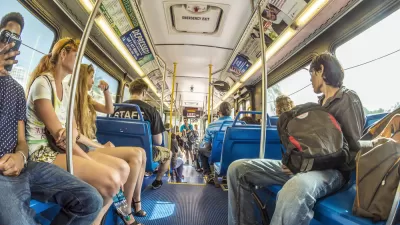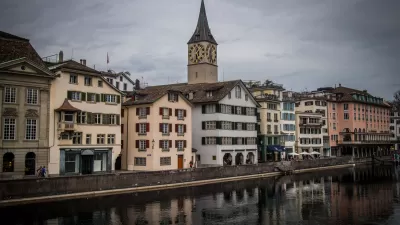We get it, China's cities are big and getting bigger. But what's it like to live there? Isaac Stone Fish takes a closer look at the quality of life in Chinese cities, and finds them almost uniformly monolithic and unlivable.
Fish, resident of the country for seven years, and visitor to 21 of its 22 provinces, offers his impression of life in Chinese cities and the historical roots of their modern development.
He credits the cause of their monolithic and virtually unlivable condition to the rebuilding of the country led by Mao Zedong and the communist party according to the principles of "a Soviet-era engineering textbook." According to Fish, Communist leaders "subscribed to the Soviet idea of what a city should be like: wide boulevards, oppressively squat, functional buildings, dormitory-style housing. Cities weren't conceived of as places to live, but as building blocks needed to build a strong and prosperous nation; in other words, they were constructed for the benefit of the party and the country, not the people."
"Yes," writes Fish, "China's cities are booming, but there's a depressing sameness to what you find in even the newest of new boomtowns... For all their economic success, China's cities, with their lack of civil society, apocalyptic air pollution, snarling traffic, and suffocating state bureaucracy, are still terrible places to live."
Not all is lost however, says Fish, Chinese cities are improving. Pockets of livability still exist in the areas that predate Communist Party control; "Chinese cities have little crime;" and "on the rare day when the sky is clear, you can even see the stars."
Thanks to Emily Williams
FULL STORY: Unlivable Cities

Planetizen Federal Action Tracker
A weekly monitor of how Trump’s orders and actions are impacting planners and planning in America.

Maui's Vacation Rental Debate Turns Ugly
Verbal attacks, misinformation campaigns and fistfights plague a high-stakes debate to convert thousands of vacation rentals into long-term housing.

San Francisco Suspends Traffic Calming Amidst Record Deaths
Citing “a challenging fiscal landscape,” the city will cease the program on the heels of 42 traffic deaths, including 24 pedestrians.

Defunct Pittsburgh Power Plant to Become Residential Tower
A decommissioned steam heat plant will be redeveloped into almost 100 affordable housing units.

Trump Prompts Restructuring of Transportation Research Board in “Unprecedented Overreach”
The TRB has eliminated more than half of its committees including those focused on climate, equity, and cities.

Amtrak Rolls Out New Orleans to Alabama “Mardi Gras” Train
The new service will operate morning and evening departures between Mobile and New Orleans.
Urban Design for Planners 1: Software Tools
This six-course series explores essential urban design concepts using open source software and equips planners with the tools they need to participate fully in the urban design process.
Planning for Universal Design
Learn the tools for implementing Universal Design in planning regulations.
Heyer Gruel & Associates PA
JM Goldson LLC
Custer County Colorado
City of Camden Redevelopment Agency
City of Astoria
Transportation Research & Education Center (TREC) at Portland State University
Jefferson Parish Government
Camden Redevelopment Agency
City of Claremont




























